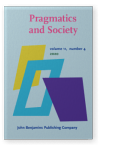Vol. 11:4 (2020) ► pp.524–544
Criticism in the Javanese Arek Cultural Community
Its expression context and strategy use
This article studies the speech act criticism and its function as a means of social control in the Javanese Arek Cultural Community (JACC) in East Java, Indonesia. Its goal is to understand how criticism is expressed in various contexts based on ±Power (±P), ± social Distance (±D), ±Public (±Pu), and to understand the criticism strategies appropriate for use in these contexts. The data was collected through Discourse Completion Tasks and interviews. The results show that the contexts for expressing criticism in the JACC are determined by parameter ±D. Based on this parameter, it can be discovered which contexts tend to be preferred and less preferred. In the use of strategy, the Indirect Criticism (IC) is more commonly used than the Direct Criticism (DC). Nevertheless, in preferred contexts, the DC is still regarded as something that is natural and customary.
Article outline
- 1.Introduction
- 2.Definitions of criticism
- 3.Criticism as a means of social control
- 4.Strategies of criticism
- 5.Contexts of criticism
- 6.Method
- 7.Criticism: Its expression in various situational contexts based on the parameters (±P), (±D), (±Pu) in the office domain
- 8.DC and IC strategies: Their use in various situational contexts based on the parameters (±P), (±D), and (±Pu) in the office domain
- 9.Conclusion
- Acknowledgements
- Note
-
References
